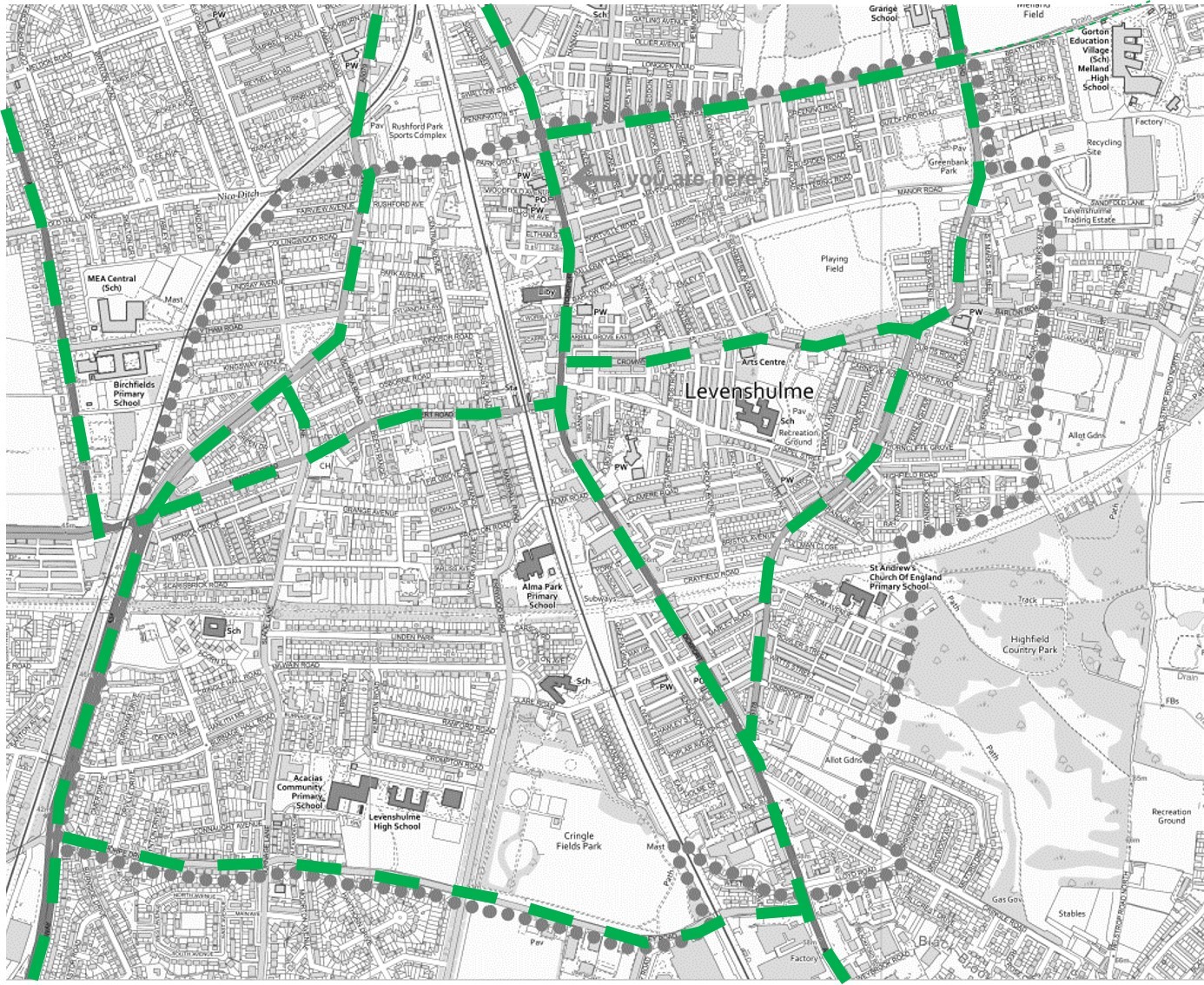This second step builds on the outcomes of the street classification exercise to define the boundaries and size of low traffic neighbourhoods.

Getting the low-traffic neighbourhood (LTN) size right is the most important step of the exercise.
If it is too small, it is unlikely that many of the short car trips will be switched to walking and cycling, minimising the potential for traffic evaporation.
If it is too big, people may be encouraged to drive some of the trips within the LTN.
The appropriateness of the boundary roads is also essential, as these are likely to experience a short-term increase in traffic volumes and should, therefore, be suited to take heavier traffic volumes.
The boundaries of the LTN will be the roads which remain open to through traffic.
Building on the outcomes of the street classification exercise, the red routes will almost inevitably fall in this category.
For the blue routes, however, further discussions with local stakeholders will be required to decide whether they should be boundary roads (open to through traffic) or become access-only for motor vehicles.
The three categories used in the street classification exercise will, therefore, have to be reduced to two:
- through routes (green)
- access-only (residential).
With blue routes re-classified as one or the other.
Key considerations should include:
- Local residents’ definition of community and neighbourhood
- The place function of streets (for example, a local high street – more information in section 4 of this guide)
- The location of schools, green spaces, shopping destinations, and bus routes (N.B. a bus route can also become access-only for private vehicles, with buses travelling through). Areas with more local destinations are likely to be the most successful LTNs, as there will be many intra-neighbourhood journeys
- The proximity to nearby parallel red routes which serve a similar movement function.
The size of the LTN will depend on the local context, but 1-1.5km2 tends to be preferable.
In the example below, most of the blue streets identified in the workshop have been re-classified as through routes (boundary roads).
Two have not, given their proximity to parallel strategic roads.

Figure 3b: Low-traffic neighbourhood (LTN) definition.
It is important to note that the definition of one LTN should not compromise the potential for future, adjacent LTNs.
In light of this, it is often preferable to undertake this exercise at a local authority-wide level, taking a holistic view of the street network, the availability of through routes and the distribution of key destinations.

